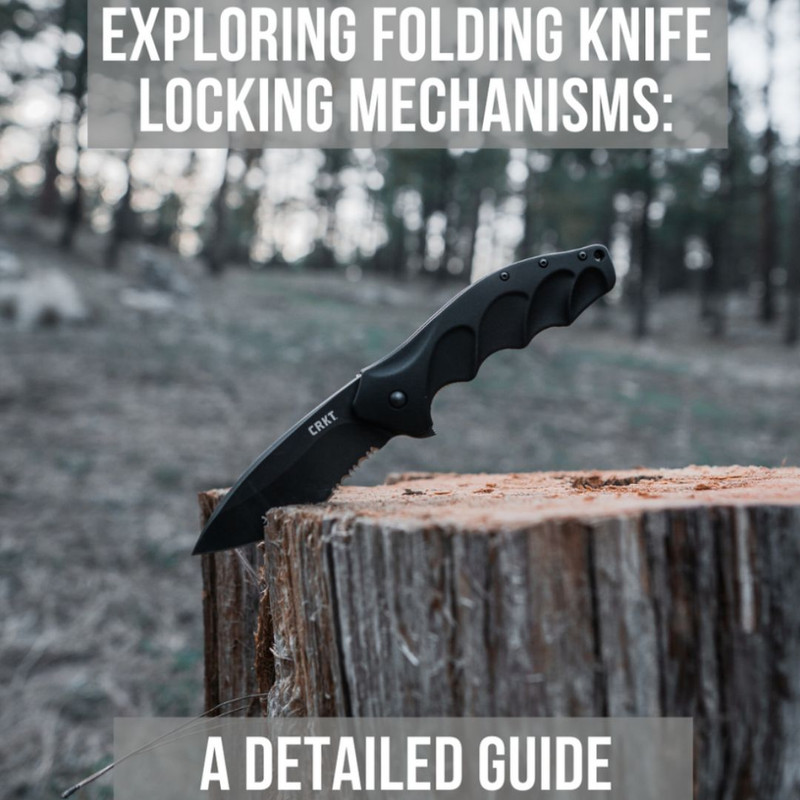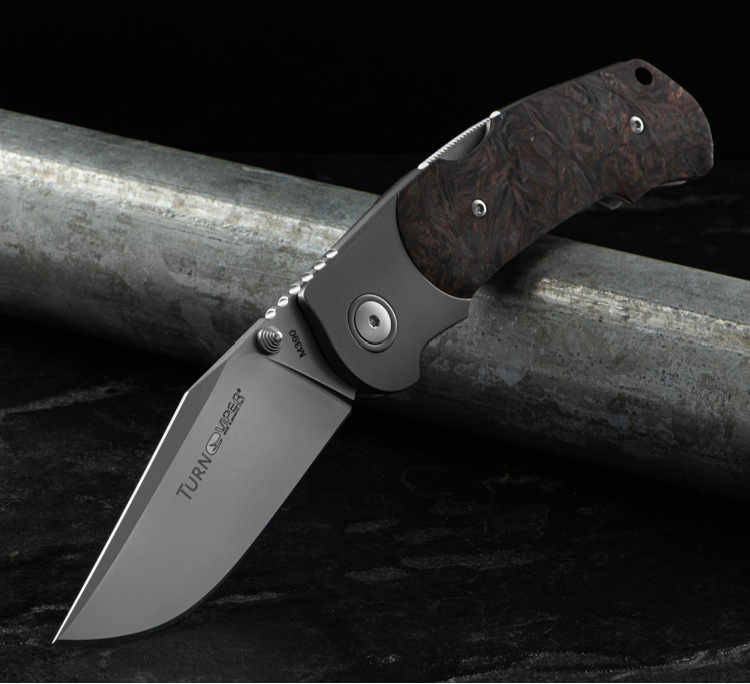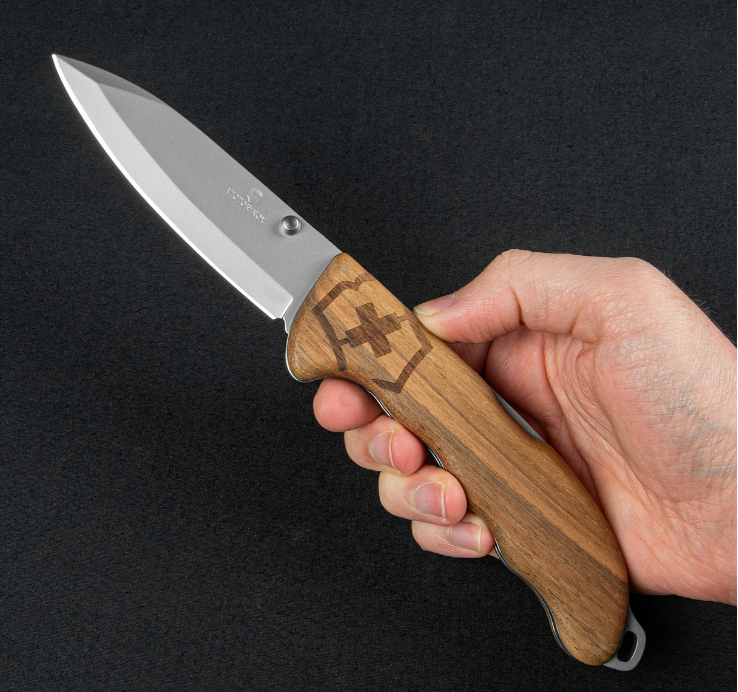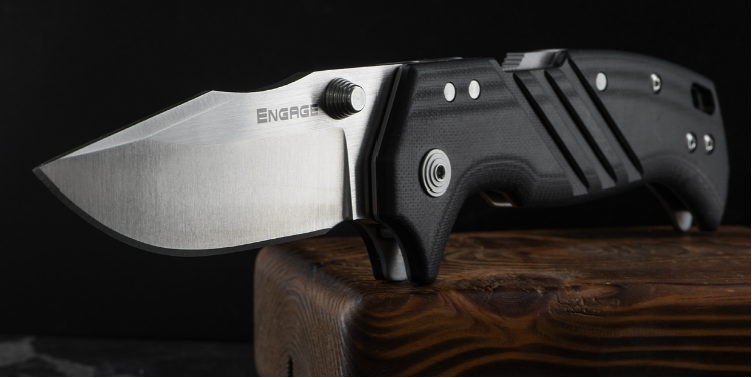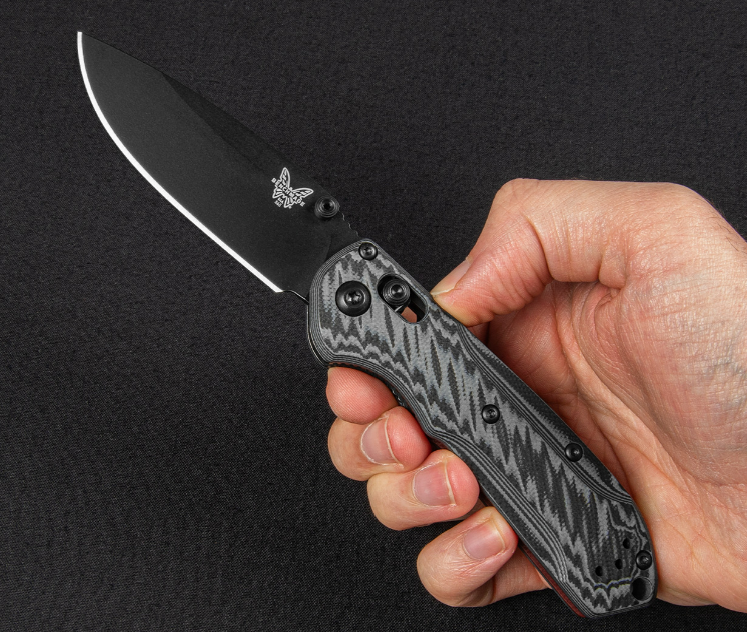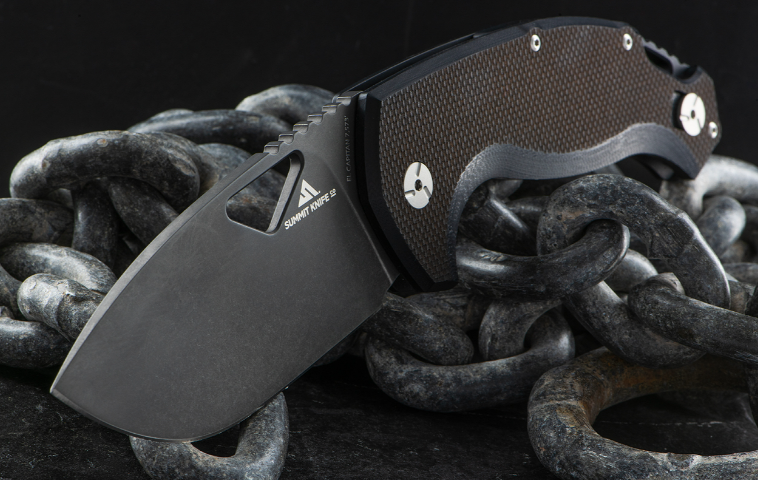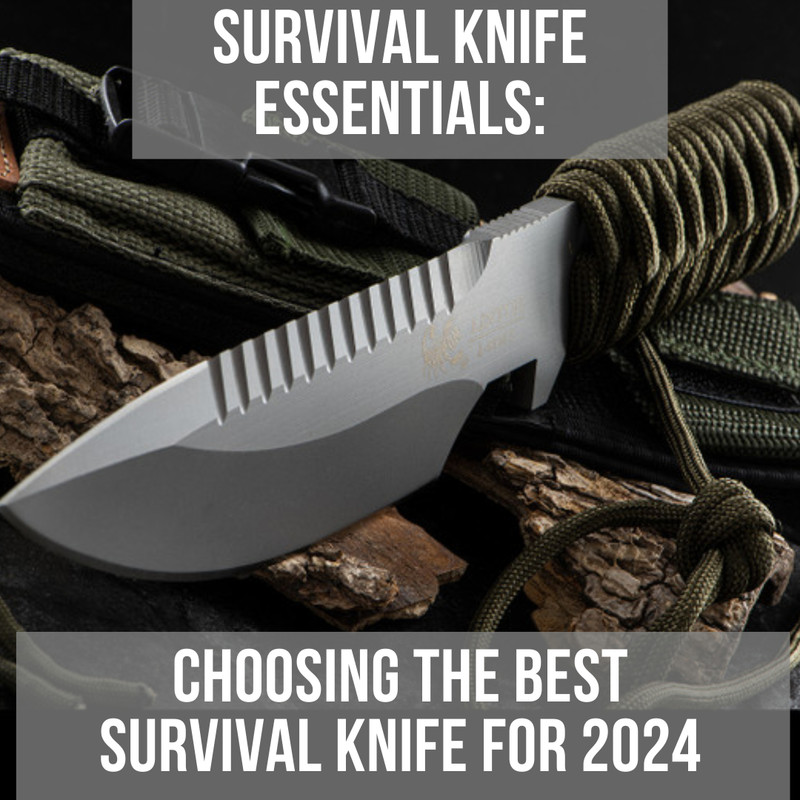Exploring Folding Knife Locking Mechanisms: A Detailed Guide
Posted by HH on 15th Nov 2023
Have you ever wondered about the marvel of engineering hidden within your pocket? The one that quietly clicks into place as you open a trusty folding knife. It's not just a utilitarian object but rather an artistic accomplishment that combines centuries of skill with cutting-edge ingenuity. Yes, we’re talking about the intricate world of the folding knife locking mechanism.
It might seem like small beans but knowing how these mechanisms work can transform your understanding and appreciation for this humble tool. From liner locks to frame locks; back locks to slip joints – each folding knife locking mechanism has its own charm and genius.
We're going on an adventure through steel levers and spring bars - diving deep into the mechanical heart of folding knives. And by journey's end? You'll not only grasp how they function but also why some are safer or easier to use than others.
Table Of Contents
- Understanding folding knife locking mechanisms
- The liner lock mechanism explained
- Frame locks – the sturdy choice
- Back locks – the traditional option
- Slip joints – simplicity meets versatility
- Exploring other locking mechanisms
- Notable knife brands and their locking mechanisms
- Maintenance tips for folding knife locking mechanisms
- FAQs in relation to folding knife locking mechanism
- How does a folding knife lock?
- What is an AXIS lock on a folding knife?
- What keeps a folding knife closed?
Understanding folding knife locking mechanisms
A folding knife is a nifty tool, but what makes it safe and reliable? The answer is in the folding knife locking mechanism. This clever bit of engineering ensures that your pocket knife stays open when you need it to and folds away safely when you're done.
What's a locking mechanism?
The primary function of a locking mechanism is simple - to make sure the blade doesn't close unexpectedly. It secures the blade in an open position, which can help prevent injuries while using the knife. Different lock types serve this purpose with varying levels of complexity.
For example, let's look at one common type: liner locks. When you open a liner lock knife, pressure from a spring bar moves into place behind the blade tang (the portion connecting the blade to its handle). As long as there’s pressure on that spring bar - which comes from holding onto the handle - it keeps the blade securely opened up until you decide otherwise.
An array of options
Folding knives are not all made equal – they come with different kinds of locks each offering unique benefits. Some prefer easy-to-use slip joints for everyday tasks while others might go for sturdy frame locks during camping trips or other outdoor adventures where reliability matters most.
- Liner locks are popular due to their simplicity and effectiveness; they use an offset liner within the handle material itself as their lock bar.
- Frame locks operate similarly but utilise part of the actual handle (rather than just lining) as their lock, making them a generally stronger option over liners.
- Back locks feature a spine on the back of the handle that locks into place when the blade is opened, providing a secure hold.
All these mechanisms have one goal - to keep your knife locked open until you decide it's time for it to close safely. And remember, whichever type you choose, regular maintenance can ensure smooth operation and increase longevity.
The liner lock mechanism explained
When it comes to folding knife locking mechanisms, liner locks hold a prominent position. As one of the most common types used in pocket knives, they combine safety with ease-of-use.
How liner locks work
Liner lock's mechanism is both straightforward and effective. Essentially, it involves a leaf-like spring bar located on the side of the handle interior - hence 'liner'. When you open your blade fully, this spring bar moves across into position against the bottom end of your blade tang.
This movement secures your blade open and prevents accidental closing when you're using it. To close safely again? Simply move that spring bar away from the tang (usually done by pushing aside with your thumb), allowing for easy single-handed operation.
Pros and cons: unpacking the details
Liner locks are not without their pros or cons, like any other locking system out there. Let’s dive into some details:
- Safety: By securing your blade open during use, liner locks greatly reduce the risk of accidents caused by unwanted closing.
- Ease-of-use: With practice, opening and closing become almost second nature due to its simple yet efficient design.
- Ambidextrous friendly: Many people find them totally ambidextrous as righties can easily manipulate closure mechanics while lefties just flip the knife over.
- Durability: The liner lock's reliability may be affected over time if not properly maintained. Regular checks for blade play and ensuring clean contact between the spring bar and tang can help avoid this.
Liner locks are just one of many locking mechanisms, but their prevalence in today’s market is a testament to their effectiveness.
Frame locks – the sturdy choice
When it comes to frame lock knives, they're the sturdy choice for a reason. Known for their strength and reliability in securing a blade's position, frame locks are an integral part of many folding knife designs.
The construction of frame locks
A typical frame lock mechanism is designed as a single piece that extends down the handle's length. This solid construction increases lock security when the blade opens, ensuring your knife stays open until you decide otherwise.
Custom knifemaker Michael Walker introduced this ingenious design, making it possible to have reliable lock mechanisms without compromising on style or usability. In fact, some argue that because of its simple yet robust nature, Walker has revolutionised pocket knives with his innovation.
Benefits of using frame lock knives
The beauty of using frame locks lies in their inherent simplicity and toughness. Their rugged construction means that these types of locking systems can withstand heavy use while still maintaining their functionality perfectly well.
Why choose robust lock mechanisms? Imagine needing to cut through tough materials like rope or wood outdoors, only to have your knife unexpectedly close. This could lead not only to frustration but, more importantly, to potential injuries if things go awry.
Comparing frame locks with other mechanisms
No two locking mechanisms are created equal - each one boasts unique features making them more suitable under different circumstances. For instance, liner locks tend to be lighter than frame locks but they're not as sturdy.
Back locks on the other hand are often seen in traditional pocket knives and while reliable, they lack the quick one-handed operation offered by a frame lock. Then you have slip joints that don't actually 'lock' at all - instead they rely on friction between the blade tang and spring bar located on the spine to keep things secure.
Back locks – the traditional option
A nod to tradition, back locks or spine locks are a stalwart in the world of folding knives. These locking mechanisms offer reliable performance and have been around for generations.
The mechanics behind back locks
When opened, a back lock ensures the blade stays in place until you're ready to close it again by locking it securely into position. Once engaged, this mechanism keeps blade play at bay by securely locking the blade into place - whether opened or closed.
To operate one is straightforward: apply pressure on what's known as the 'lock bar', typically located along with its spring bar counterpart on the spine of your knife. This action releases its grip from an indent in the base (or tang) of your blade - freeing up movement and allowing safe closure.
Historical significance of back locks
Long before custom knifemaker Michael Walker revolutionised lock designs with his liner lock concept, back locks were widely used across various applications. With their tried-and-tested reliability underpinning every cut, slice and whittle, it’s easy to see why they’ve stood firm against newer locking systems vying for pole position over time.
This sentiment is not merely rooted in nostalgia; substantial evidence supports these assertions. Over centuries, back locks have consistently provided unwavering service without hesitation and this enduring track record speaks volumes about their dependability.
Durability meets versatility
The strength within simplicity - that’s their charm. Just pure functionality, reliability and a sturdy lock face. A back lock knife’s strength is in its simplicity, and the fact that it can be operated with one hand also makes it an attractive option for many. Back locks are not just limited to traditional or vintage knives - these robust locking mechanisms are equally at home on modern pocket knives too.
Slip joints – simplicity meets versatility
In the world of folding knives, slip joints have earned their place as a go-to locking mechanism. Their operation hinges on the friction between the blade tang and spring bar located on the spine.
Different types of slip joint mechanisms
The beauty of slip joint mechanisms is in their diversity. From simple to complex designs, each one brings its unique charm to your pocket knife.
A classic example is the traditional friction folder. It relies solely on manual pressure applied by users for keeping it open or closed. This makes it an easy and safe choice for beginners venturing into folding knives territory.
Moving up from there, we find single-blade types like Pen blades or Clip blades that offer more versatility with little complexity added. These are often found in gentleman's folders due to their sleek design without compromising safety when closing.
Last but not least are multi-bladed versions where different sizes and shapes coexist within a single handle - think Swiss Army Knives. Multiple tasks can be handled simultaneously thanks to this innovative approach; just remember which blade you've got out.
No matter what type you choose, they all share one common trait: simplicity coupled with incredible versatility making them perfect companions for everyday carry (EDC) - of course, a slip joint knife with a blade shorter than 7.6cm (3”) fits the definition of UK Friendly Carry - read more about that aspect of pocket knives in our blog post, A Guide to Knife Laws in the United Kingdom.
Safety measures in slip joints
How does such a simple system keep you safe while using your knife? The answer is hidden within the pocket companion itself:
- The tension created by the spring bar holds your blade firmly once opened, preventing unintentional closure during use.
- No special action is needed - just open and close the knife with ease to focus on your task.
- Since there's no physical lock involved, closing your knife is as easy and intuitive as opening it - simply apply some pressure towards the handle while keeping fingers clear from the blade path.
All these factors combined ensure a safe yet straightforward operation of your folding pocket knife. This simplicity in design coupled with practicality makes slip joints an excellent choice for EDC lovers everywhere.
Exploring other locking mechanisms
The world of folding knives is not limited to just liner locks or frame locks. Let's venture into some less common but equally effective locking mechanisms, such as the AXIS lock, button lock, ring lock, and ball bearing lock.
The AXIS lock
Invented by custom knifemaker Michael Walker, the AXIS lock features a small steel bar that moves back and forth within a slot cut into both sides of the knife handle. It offers increased safety due to its ability to stay locked when pressure is applied during cutting tasks.
This system is fully ambidextrous, permitting you to easily open or shut the blade with either hand. The spring tension keeps it in place whether your knife is closed or fully opened, which makes this an excellent choice for everyday carry (EDC).
Bearing down on ball bearing locks
Moving onto another unique mechanism - ball bearing locks. As the name suggests, these rely on a free-floating steel ball-bearing enclosed inside part of the handle material.
The beauty of this system is evident in its seamless and secure operation when opening or closing your knife. It provides peace of mind, assuring you that once engaged it will remain steadfast even in challenging conditions.
Button locks
You might find button locks nifty if quick one-handed operation is what you are looking for. They use a push-button plunger placed conveniently near to where your thumb naturally rests when holding the knife – making them extremely user-friendly.
- A precision-crafted spring mechanism ensures the blade locks securely when open.
- Pressing the button releases it, allowing for swift and safe closure of your knife.
The classic ring locks
Let’s round up our exploration with a nod to traditional ring locks. Ring locks are a simple collar with a sloping "top" - as seen in Opinels. As the collar rotates, the slope of the ring engages with the bottom of the open blade, wedging it open.
- This type of lock can withstand substantial force without breaking or closing unexpectedly.
- Because they're robust and straightforward, they make an excellent choice for heavy-duty use.
Notable knife brands and their locking mechanisms
Each one is unique, boasting an array of features that set them apart.
Cold Steel, known for its rugged designs and durability, introduced the Tri-Ad lock system. This powerful mechanism offers unrivalled strength without compromising on safety or performance. A critical feature to note is its stop pin design that absorbs shock stress while using the knife.
The Tri-Ad lock isn't just robust, it's also incredibly user-friendly, allowing you to close your knife safely even when wearing gloves or in adverse weather conditions. And don't worry about blade play – Cold Steel has got you covered with this rock-solid locking mechanism.
Benchmade Knives: pioneers of AXIS locks
Then we've got Benchmade Knives. Benchmade shook up the scene by introducing an entirely new kind of locking system - the AXIS lock.
This patented mechanism makes use of a small hardened steel bar which moves back and forth within a slot milled into both liners (knife handles). When opened fully, this bar extends outwards onto the tang portion (the section connecting handle and blade) providing an exceptionally secure lock-up against closing.
A legend among enthusiasts: Chris Reeve’s Integral Lock
Chris Reeve, the renowned custom knifemaker, developed what many consider is one of the most significant innovations in modern pocket knives – 'The Reeve Integral Lock' (RIL) or, as we more commonly know it, the frame lock.
It's an evolution of Michael Walker’s liner lock design where instead of using a thin liner inside the handle material, Reeve used a substantial part of one side of the handle to create both - handle and lock. This makes for an incredibly strong yet straightforward locking mechanism that can take on heavy-duty tasks without batting an eyelid.
Maintenance tips for folding knife locking mechanisms
Regular upkeep of your folding knife can boost its performance and longevity. Let's get into the specifics.
Cleaning the blade tang and pivot area
The blade tang, where it connects to the handle, is a key area to maintain. Dirt build-up here can cause blade play, an unwanted wobble when open. A gentle scrub with warm soapy water followed by thorough drying should do the trick.
Just as important is cleaning around the pivot point or hinge - this prevents friction which could otherwise wear down parts faster than usual.
Tension checks on springs and locks
A loose spring bar located at a lock's spine may lead to safety issues, causing unintentional closing of blades in some cases. Regular checks are necessary – if you find your blade closing too easily without much resistance from springs or locks, consider getting professional help for tightening these components.
Lubricating your knife’s moving parts
To maintain the optimal functioning of the moving parts in your pocket knives, such as bearings found in ball bearing locks or the mechanism of liner lock liners, it is crucial to incorporate lubrication after each cleaning process. This involves applying suitable oils specifically designed for knife usage, to ensure smooth operation.
When should you seek professional help?
- If you notice changes in the smooth operation of your knife, such as difficulty in opening or closing, it may indicate damage to components like mid-locks breaking apart.
- Despite proper execution of regular maintenance practices, if you encounter challenges in opening or closing the knife due to excessive pressure caused by hardened debris lodged within inaccessible parts, address this issue promptly.
- If you come across more complex issues that require specialised tools for resolution, such as the blade being unable to keep a stable open or closed position or the lock moving freely despite being in a locked state, consider seeking professional assistance. Contact Heinnie Haynes support on 033 0300 0400 or use our contact us form.
Avoiding common pitfalls
To increase the longevity of your folding knife's locking mechanisms, avoid using it for prying objects apart. Remember – these are precision instruments not pry bars. Equally important is avoiding excessive force when closing the knife because this could cause premature wear on the lock face where it engages with the tang.
To wrap things up, it's crucial to keep everything spick and span. Regular cleaning is a must.
FAQs in relation to folding knife locking mechanism
How does a folding knife lock?
A folding knife locks using mechanisms like liner, frame or back locks which secure the blade open until manually released.
What is an AXIS lock on a folding knife?
An AXIS lock uses a small steel bar that goes through slots in both handle sides, securing the blade firmly when opened.
What keeps a folding knife closed?
Folding knives typically use spring tension or friction between components to stay shut when not in use.
Is a locking knife legal to carry in the UK?
For more information, take a look at our blog post A Guide to Knife Laws in the United Kingdom.
Unravelling the intricate world of a folding knife locking mechanism, you've journeyed through liner locks to frame locks, back locks and slip joints. Each one holds its own unique charm and ingenious design.
You've learned that safety is paramount in any folding knife's design - ensuring it stays open when needed, yet closes safely when not. You've discovered the resilience of frame lock knives and their unmatched strength for heavy-duty tasks.
You’ve explored other less common but equally effective mechanisms like AXIS lock, button lock or ball bearing lock – each with its unique benefits. And you’re now aware how renowned brands such as Cold Steel or Benchmade have their distinctive takes on these mechanisms.
In essence, appreciating your trusty pocket tool goes beyond just using it; understanding the underlying mechanics enhances respect for this humble piece of craftsmanship.




